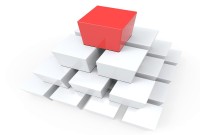- Home
- Business Processes
- Industry Knowledge
- Aerospace Industry
- Automotive Industry
- Banking Domain
- BFSI Industry
- Consumer/ FMCG Industry
- Chemicals Industry
- Engineering & Construction
- Energy Industry
- Education Domain
- Finance Domain
- Hospitality Domain
- Healthcare Industry
- Insurance Domain
- Retail Industry
- Travel and Tourism Domain
- Telecom Industry
- Leadership Skills
- eLearning
- Home
- Leadership
- Leadership Styles
- Characteristics of Leadership
Characteristics of Leadership
There are four characteristics of leadership that help us to understand the character of leadership as a concept. 1. Leadership is a process, 2. Leadership involves influence, 3. Leadership always occurs in a group context and 4. Leadership involves goal attainment. These are the four components that make up the character of the 'leadership' term and help us to define the leadership concept. All of these components of leadership have common characteristics.
1. Leadership is a process
Leadership is defined as a process, whereby individual influences a group of individuals to achieve a common goal. Leadership is a process, not a trait of the leaders but a transactional event that takes place between leader and the led. It affects both the leader and the led in the process of interaction.
As a process, leadership entails perceiving when changes are needed and influencing and facilitating a group's efforts through non-coercive means, to set and achieve group goals. It is not a one-way event, but it is an interactive event. Thus Leadership has three inevitable components -a leader, followers, and a situation.
The relationship between leadership, followership, and the situational and organizational context within which the interactions between leaders and followers occur constitute the leadership process. It is a process which involves relationship and therefore it cannot exist in isolation. Just like the existence of a teacher is meaningless without students, the leadership has no subsistence if there is no follower(s) and a situation.
2. Leadership involves influence
Leadership is defined as the ability to influence a group towards the achievement of a vision or set of goals. To gain followers requires influence and leaders must be able to convince followers to follow his instructions. Influence is an essential condition of leadership. Without the influence, the leadership process itself cannot exist. This moves beyond the position defining the leader, to look at the ability of the leader to influence others, that is, both those who would consider themselves followers, and those outside that circle. Indirectly, it also builds in leadership character, since without maintaining integrity and trustworthiness, the capability to influence will disappear.
Leadership is influencing followers and it is concerned with the way the leader affects his or her followers. Leaders have to influence and direct their followers or subordinates. Therefore, the main function of leadership is to induce or persuade all subordinates or followers to contribute to organized goals in accordance with their maximum capability. While discharging responsibilities, they have to be in constant interaction with' the people with the objective of involving them for collective decision making.
Leadership depends upon the individual qualities of the person and not the office that he holds. Leadership is the term that denotes the behavior or functions of the leader. The leader affects the individual in such a way they surrender themselves and follow his dictates.
3. Leadership occurs in a group context
Leadership always takes place in groups. Leadership involves influencing the group to achieve common goals. Understanding of the leadership is always in the context of the level of the followers and there with the leaders.
Leadership implies the existence of followers. Generally, it is the followers, who determine if the leader is successful by providing their support and accomplishing the needed tasks. Leadership is not about doing things themselves but motivating the followers to work towards business objectives. Here is always an unequal distribution of authority among leaders and group members and commonality of interest between the leader and his followers.
Understanding of the leadership is always in the context of the level of the followers and there with the leaders. Both leaders and followers have involved together with the leadership process. The leaders are in the task of taking initiatives and by which they link themselves with the stakeholders.
If followers do not trust or lack confidence in their leader, then they will be uninspired. To be successful the leader, the leader must know his people, must convince his followers, that he is worthy of being followed.
Understanding these basic individual differences in the followers affects the leadership style and leadership itself. The kind of personality exhibited by the followers in an organization also helps in deciding the style to be adopted. For instance, if employees in an organization prefer a high need for independence, show readiness to assume responsibility, display interest in problem-solving and decision making, then leaders permit greater freedom.
Thus the leadership of a group or organization comprises the direction, impetus, and energy that arises from the circulation of initiatives. An initiative is passed on to the followers who react, respond, and add to circulation, generating their own initiatives.
Throughout the process, there are multiplicities of leaders engaging in actions that comprise this continual circulation.
4. Leadership involves goal attainment
In business, leadership is linked to performance. Those who are viewed as effective leaders are those who increase their company’s bottom lines. These are leaders that understand what the organization wants to achieve, and know how it can be accomplished.
The leader looks into the future and creates new ways in which the organization can prosper. The leader in collaboration with others develops strategies for achieving organizational objectives.
They create networks within the organization to help their groups get work done, and are just as adept at breaking down organizational barriers to progress. The human relations movement, beginning with the Hawthorne studies in the early thirties, focused on the important role of employee motivation and group norms of organizational success. This led to the recognition of leadership effectiveness as an important determinant of organizational effectiveness. The leader appropriately and effectively assigns responsibility and authority. The leader identifies, collects, organizes, and analyses the essential information needed by the organization.
The leader makes timely decisions that are in the best interest of the organization by analyzing all available information, distilling key points, and drawing relevant conclusions. The nature of the task performed in an organization plays a greater role in determining the leadership style. If the nature of the task to be performed in an organization is quite critical and the time is too short in taking decisions, autocratic styles may be used by leaders, whereas in handling the simple tasks with no pressures of time, the leader might adopt a participative style.
The structure of the organization may determine the kind of leadership to be adopted. For instance, some organizations may put a heavy emphasis on the leader’s abilities to work effectively with people. At other times, the social, economic, and political pressures that an organization faces prompt certain styles of leadership to be followed.
Leadership can be summarized as the catalyst that transforms organizational potential into reality. The concept of leadership in itself covers all interpersonal relationships that influence the working of the organization towards achieving its business objectives and growth.
Related Links
You May Also Like
-
At different points in your professional career, it is helpful to identify your core values. Values are the qualities considered to be the most important guiding principles that determine the priorities in your life and greatly influence your career choices. Your career brings happiness when it is in agreement with the beliefs you have about what is important and meaningful to you. Awareness of your values will help you develop a clearer sense of what's most important to you in life.
-
Maslow's hierarchy of needs is a motivational theory that explains that people are motivated by five basic categories of human needs. These needs are physiological, safety, love and belonging, esteem, and self-actualization. There is a little scientific basis for this concept of a hierarchy of needs.
-
McClelland's Theory of Needs is a human motivation theory which states that an individual's specific needs are acquired over time through our culture and life experiences. As per the three needs theory, these acquired needs significantly influence the behavior of an individual. The three main driving motivators are the needs for achievement, affiliation, and power.
-
Power is the ability to exercise influence or control over others. Leadership involves authority and it is very important for leaders to understand what type of power they're using. The 5 Types of Power in Leadership are Coercive power, expert power, legitimate power, referent power, and reward power. Authority is the right to command and extract obedience from others. It comes from the organization and it allows the leader to use power.
-
Theory Z also called the "Japanese Management" style is a leadership theory of human motivation focused on organizational behavior, communication, and development. It assumes that employees want to enter into long term partnerships with their employers and peers. Offering stable jobs with an associated focus on the well-being of employees results in increased employee loyalty to the company.
-
Principles of management are fundamental concepts and advisory guidelines for managerial decision making. By using management principles, managers can more easily achieve the objectives and avoid making mistakes in their activities. Management principles can be applied to any kind of organization and to managers at all organizational levels.
-
Emergent leadership occurs when a group member is not appointed or elected as leader, but rather that person steps up as the leader over time within-group interactions. Have you ever faced challenges in getting accepted into your new role of position as a leader? Groups don't automatically accept a new "boss" as a leader. Emergent leadership is what you must do when taking over a new group. Learn more about emergent leadership.
-
Teams are part of the modern organizational culture. Whether you are a team leader or a team member, having a better understanding of how teams work, and being able to identify where the team is in the process, is a critical part of ensuring the team is ultimately successful. Start with the basics and understand what a team is and what role they play in an organization.
-
What are the functions which a leader does to establish as a leader? What are the activities undertaken by them to become great leaders, rather revolutionary leaders? The most important tasks done by a leader in all situations are defining the vision, mission, and goals, leading the team, administrative functions, motivating followers, decision making and conflict resolution, and continuous development.
-
Process & Stages of Creativity
Creative ideas do not come just like that. There is a process to it. There are a number of techniques of creativity to support the generation of ideas but the widely practiced ones are brainstorming and lateral thinking. Most innovations are not so much the product of sudden insights as they are the result of a conscious process that often goes through multiple stages. The creative process can be divided into four stages of preparation, incubation, evaluation, and implementation.
Explore Our Free Training Articles or
Sign Up to Start With Our eLearning Courses

About Us
Learning
© 2023 TechnoFunc, All Rights Reserved










